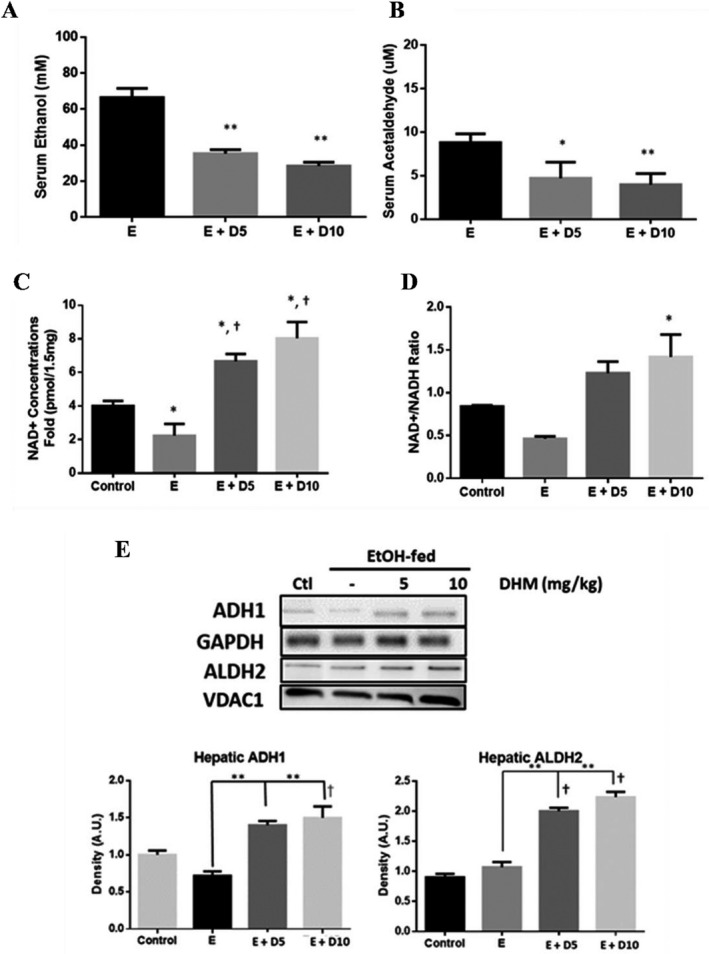Fig. 5.

DHM reduces serum ethanol (EtOH) and acetaldehyde (ACH) concentrations in mice administered 3.5g/kg EtOH, reverses chronic EtOH‐mediated depletion of hepatic NAD+ levels, and induces hepatic ADH1/ALDH2. Serum (A) EtOH and (B) ACH concentration differences measured in 16‐week‐old mice injected with 3.5 g/kg EtOH and DHM (5 or 10 mg/kg) 45 minutes after injections (*p < 0.05 and **p < 0.01; n = 6/group, 2‐way ANOVA). (C) Mice chronically fed EtOH for 8 weeks show significantly less NAD+ concentrations in the liver than water‐fed controls (*p < 0.05; n = 6/group; 2‐way ANOVA). Mice administered DHM at both 5 and 10 mg/kg showed elevated NAD+ concentrations relative to EtOH‐fed controls and water‐fed controls (*p < 0.05, compared to EtOH controls and †, *p < 0.05, compared to water‐fed controls). (D) Hepatic NAD+/NADH ratio showing a significant increase in the ratio of mice treated with 10 mg/kg DHM (*p < 0.05). (E) Representative Western blot images of hepatic expression of ADH1 and ALDH2 in C57BL/6J mice chronically fed EtOH and either treated with or without DHM. Data represented as mean ± SEM. E = EtOH, D5 = 5 mg/kg DHM, and D10 = 10 mg/kg DHM.
